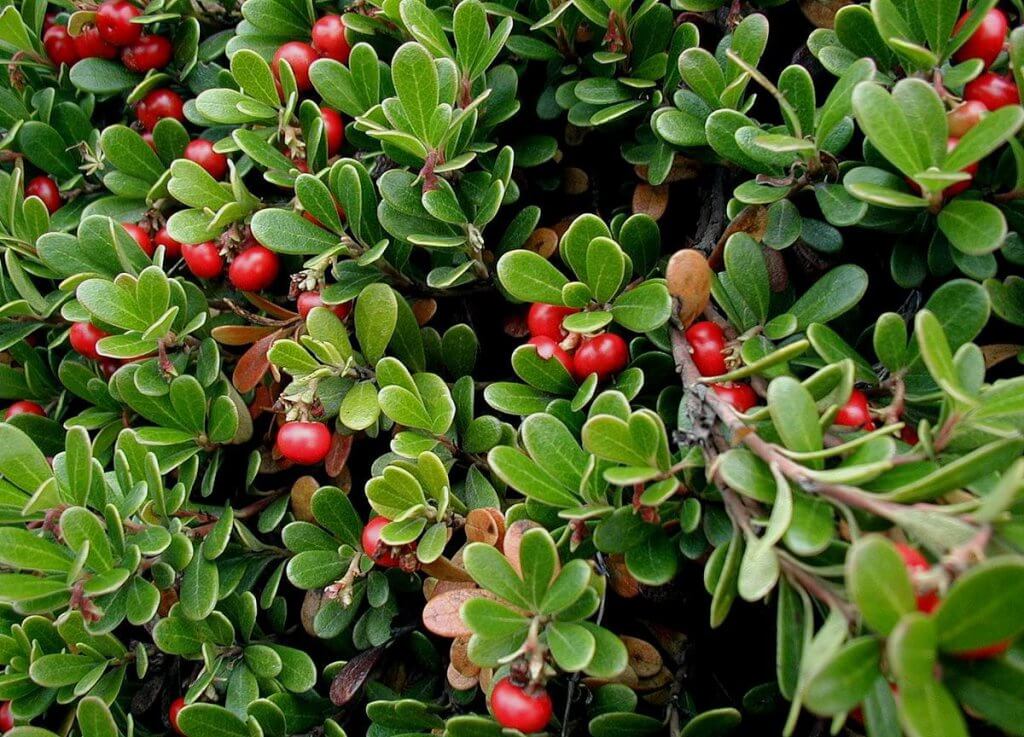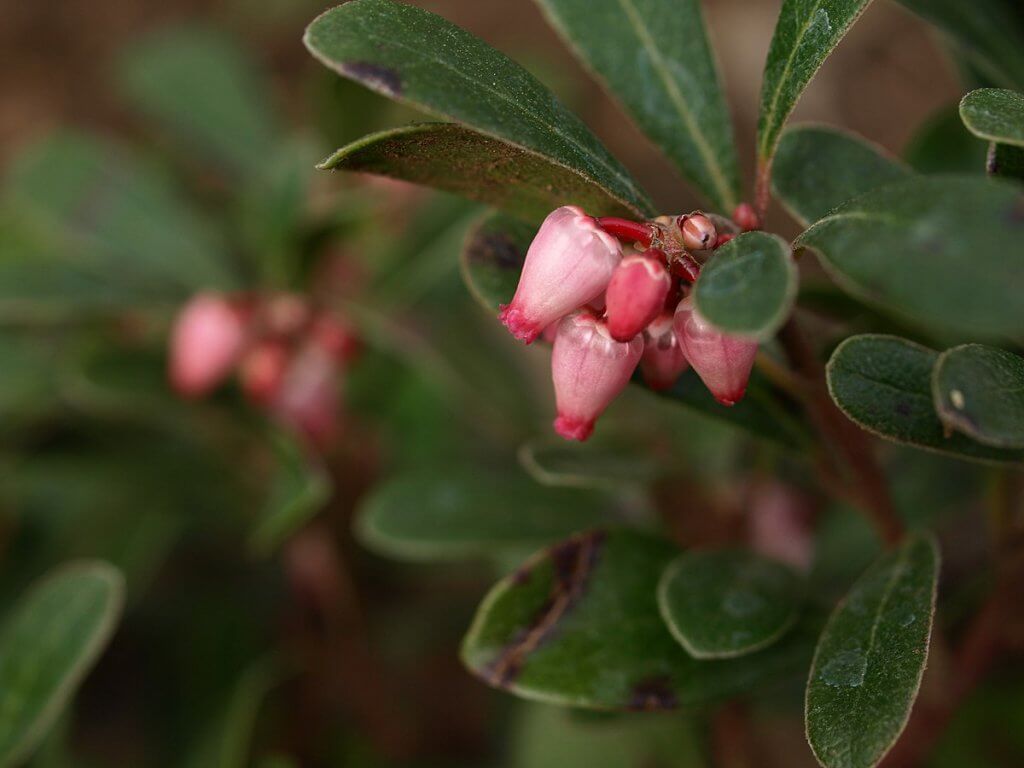
(Photo by: Otto Wilhelm Thome/Wikimedia Commons)
Bearberry (Arctostaphylos uva-ursi) is a dwarf, evergreen shrub that can be found growing in North America, Europe, and northern Asia. This plant can be recognized in the wild from its small, shiny red berries. These bright fruits are a favorite among woodland creatures, especially bears. They are also edible to humans and since ancient times, people often gather them for food. Bearberry leaves can also be consumed as a herbal remedy.
Edibility and culinary use
The small, bright red berries can be eaten raw or cooked. When eaten raw, these berries are dry, mealy, and almost tasteless. On the other hand, cooking bearberries bring out their natural sweetness, making them taste similar to cranberries. These red berries are great for making jam, preserves, and cool beverages. They can also enhance the flavor of stews and sauces.
Aside from the berries, bearberry leaves are also edible. Dried bearberry leaves can be brewed to make a refreshing and healthy herbal tea. This tea is often used to treat infections and to prevent kidney problems. Also, combining bearberry leaves with certain herbs can enhance its medicinal properties. People usually mix them with yarrow, dandelion leaves, hydrangea, corn silk, or couchgrass to make herbal infusions.
Health benefits
Native Americans have been using bearberry leaves to make herbal medicine for thousands of years. Bearberry tea is nutrient rich; it contains several B vitamins, vitamin C, iron, potassium, calcium, and magnesium. It also contains antioxidants such as tannins and flavonoids.

(Photo by: Sten Porse/Wikimedia Commons)
This drink is mainly used to treat urinary tract problems, including kidney infections, kidney stones, urethra infection, excess urination, and painful urination. Additionally, it’s also drunk to treat other conditions such as fever, water retention, indigestion, back pain, rheumatism, constipation, bronchitis, and diabetes. This herbal infusion can also serve as a mouthwash for mouth ulcers, cankers, and sore gums.
Bearberry leaves can be used topically as well. To do this, the leaves are crushed and then used to make a poultice. This poultice can be applied onto wounds, cuts, and burns to help them heal and to prevent bacterial infections. Bearberry poultice can treat rheumatism, back pain, sores, rash, and other skin conditions as well.
Cultivation
Bearberry bush is a wonderful addition for any garden. The thick green foliage looks great as a ground cover. Then, since this plant is evergreen, it’s also beautiful in the winter when most other plants wilt. Moreover, bearberry can help attract pollinators, especially hummingbirds and butterflies, to help your garden thrive. And of course, as an added bonus, you’ll get a convenient food and herbal medicine source in your own backyard.
Bearberry isn’t particularly hard to grow, but it’s a rather slow-grower, taking a significant amount of time to settle down and mature. For the best result, choose a cool area with full sun or partial sun exposure. Bearberry prefers well-drained, sandy soil, but it can also tolerate poor soil conditions. This hardy plant is also able to tolerate drought and salty environment, making it great for gardens near the coast or cold areas where the roads are often salted.

(Photo by: Flowersinmyyard/Wikimedia Commons)
You can get bearberry bushes that are ready to transplant onto the garden from some plant nurseries. But if finding established bushes is difficult in your area, try growing them from seeds. Bearberry seeds are more readily available in the market.
Pre-soak the seeds in near-boiling water for 10-20 seconds and then stratify them in cold temperature for at least 2 months. After that, sow the seeds indoors and they should germinate within 60 to 90 days. Once big enough, plant them in individual pots and let them stay inside for their first winter. Then, transplant them outside in late spring or early summer. The plants will grow slowly in the first year. But eventually, it will mature and grow rapidly.
Cautions
These berries should only be consumed in small amounts for a short period of time. Overconsumption of bearberry can result in adverse side effects such as nausea, vomiting, stomach pain, tinnitus, liver damage, breathing problems, and convulsions. Pregnant women should avoid bearberry as it may reduce blood supply for the fetus and induce early labor. It’s also not recommended for breastfeeding women and children.
Conclusion
Bears aren’t the only ones who can enjoy bearberry, humans can also consume this plant. Aside from having a nice, mild flavor, bearberry also offers a wide range of medicinal properties. This plant can be found easily in forests across Northern America, so you shouldn’t have too much problem foraging them. But if you don’t want to have to compete with woodland creatures to get your hand on these shiny berries, try planting bearberry bushes in your backyard. They look great as ornamental plants, so on top of a convenient food and herb source, you’ll also get a lovely garden
---------------
Writen by Cornelia Tjandra
Cornelia is a freelance writer with a passion for bringing words to life and sharing useful information with the world. Her educational background in natural science and social issues has given her a broad base to approach various topics with ease. Learn more about her writing services on Upwork.com or contact her directly by email at cornelia.tjandra@gmail.com
Many of our readers find that subscribing to Eat The Planet is the best way to make sure they don't miss any of our valuable information about wild edibles.
See our privacy policy for more information about ads on this site







One Response
Are bearberries ever used in commercial medicines or vitamins ? These are very interesting. C